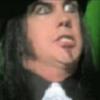jos jedan prilicno savrsen album. nisu se mnogo pomerili stilski od proslog, opet je jako uskladjena kombinacija death doom atmosfere i classic HM riffologije. dodali su malo neke Somewhere In Time-esque klavijature, lepo se uklopile, lepo atmosferu stvaraju. Koliko god da su super HM riffovi, idalje najvise volim kad uspore, pa mi Daughters of Lingering Pain omiljena na albumu i mozda jedna od najboljih njihovih pesama. ova pesma mi bas zvuci kao da su usavrsili to sto su hteli, krece sporo i depresivno, riffovi u srednjem delu bi mogli da se nadju na Crimson Glory albumu, pa se vrate na sporo, i sve se to izdesava na jako prirodan i tecan nacin. najvise mi je krivo sto sam slusao one 3 pesme sto su izbacili kao singlove hiljadu puta pre izlaska albuma pa kad je stigao album, osecao sam se kao da slusam EP. trudicu se da kuliram singlove sledeci put. sto se mene tice, niko u metalu trenutno ne pise bolje riffove od Lassea. bombona album, ce se pazari sigurno.







